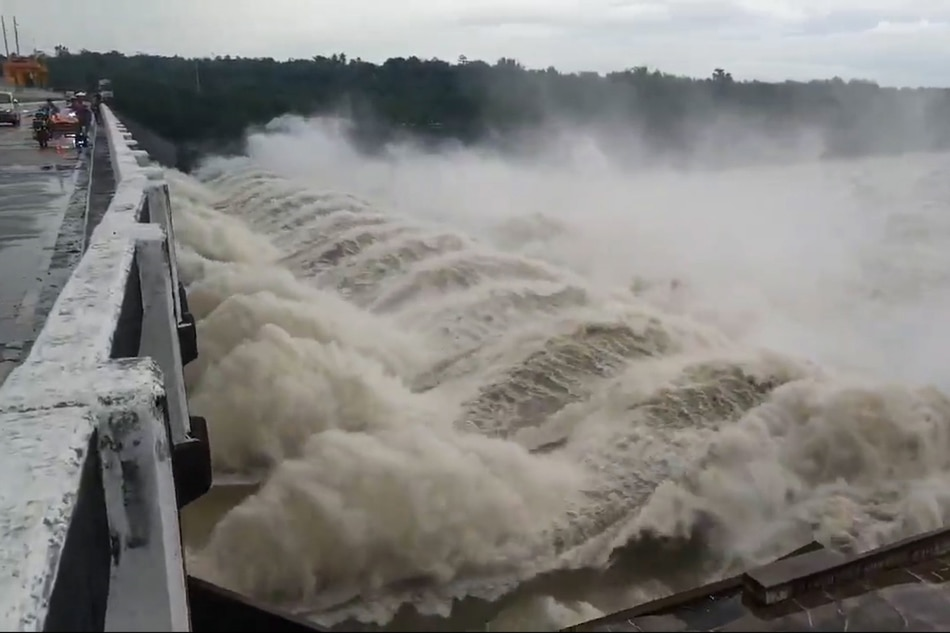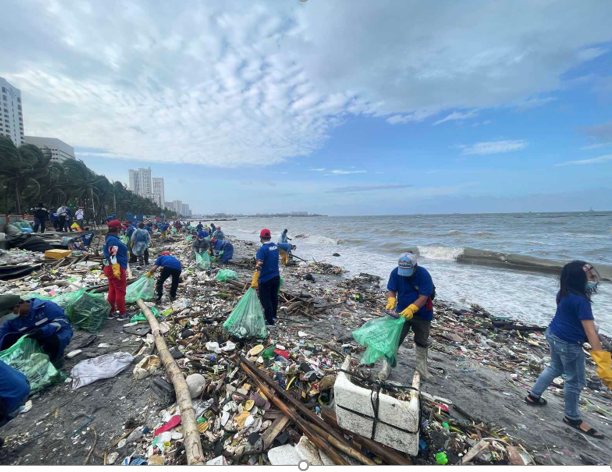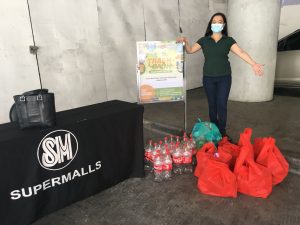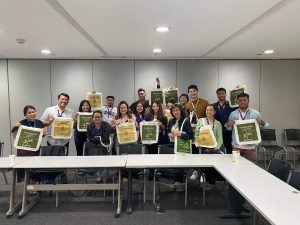The deafening head tone of my niece ringed in my ear drums. “Heto ako, basang-basa sa ulan, walang masisilungan,” her body tensed as she was holding the high notes of the chorus, trying to mimic the Filipino rock band in one of her karaoke numbers. They say in our vernacular, “kapag pangit boses mo at kumanta ka, uulan.” To my disappointment, it did not rain.
Dancing in the rain
I’d always thought that rain can be magical. Just sitting at the corner of our sofa and taking another sip of my coffee – the roasted beans are almost too familiar to my taste buds – watching the raindrops rushing down the window panel. The plummeting water hits the leaves of the plants, breaking apart as they touch the soil. The wreaths of rain give a new sense of the natural world.
There’s also a certain satisfaction seeing the people slowly dissipating from the streets, taking shelter at a nearby sari-sari store. Different colors of umbrella take a stride along the sidewalks. The noises from the cars and public transportation are muted by the sound of crashing raindrops. It feels like the nature is entertaining us in one of its greatest shows.
When I was a kid, I enjoyed the sensory experiences from playing in the rain. I grew up in my mother’s ancestral home, which has an amazing pastoral view at the back, with long verdant stretches of lands used for farming and grazing animals. My cousins and I loved to skid and dance on the damp ground and drenched grasses – listening to the cacophony of the pitter-patter of the rain and the stridulation of the insects, and picking up the glistening saraisa and kamias that fell from the trees.
At a young age, I learned the wonders of rainwater in school. The water seeping down the ground adds to the ground water, which is a significant source for potable water from our poso. It fills our water reservoirs that supply our water consumption. It provides habitat for aquatic life and nourishes the soil useful for vegetation and agriculture. I’m a pluviophile, rain or shine.
Rain is truly a nature’s gift.
Praying in the rain
The climate during the “ber” months in the country can be biting, especially in our province bordered by Sierra Madre, Cordillera, and Caraballo mountain ranges. But during the closing days of November in 2004, the wind was unusually breezy. PAG-ASA then issued an advisory on tropical depression “Winnie” in Luzon.
Winnie was a weak tropical cyclone, but it brought torrential rains in the Philippines. There were many reported landslides and flooding in mainland Luzon. Weeks before that, typhoon Unding and tropical storm Violeta ravaged the island. That particular November, the horrors brought by disasters surmounted the Halloween gimmicks, even more horrifying in broad daylight.
On an early morning in December, just days after the heavy rains from Winnie, I woke up from the ruckus caused by our dogs and the sound of an approaching siren. Typhoon “Yoyong” was leaving PAR that day, but the heavy rain and gusting winds continued to flatten trees and houses. Within a space of two weeks, four storms devastated our land. I was a high school freshman at the time, and all I was thinking was class suspension and more time to play on my computer.
I got up to check outside when I heard my parents and other inaudible voices at our storage-cum-garage room, where some of the space was made as a makeshift warehouse for some of our store inventory. The area had a lower elevation than the rest of the house, so I saw right off the floodwaters rapidly entering the room.
Floods are uncommon in our province. But being a river valley, the Magat river can inundate low-lying areas when it overflows due to rainfalls or during a dam discharge from Magat dam located at the confluence of the river’s headwaters with Cagayan river, the longest river in the country.
Out of panic, I started foisting in with the men in the room, mostly our neighbors, to carry sacks of dry beans and boxes of bakery products that would be transferred to our separate warehouse at the back of the house. I could barely lift the item and when I did, it almost slipped out of my hands. My mother has a rather stoic demeanor, so I feared I would get scolded for my stupidity. But with a worried look and concerned tone, she told me to let others handle it. In the rain, I prayed for the weather to return to normal.
Rain can also be nature’s wrath.
Singing in the rain
Metro Manila is notorious for floods. I experienced it firsthand the moment I moved there for college. Even in highly urbanized areas, a small precipitation can clog waterways and sewages. In places where the open spaces are shrinking, flood can easily reach roads and pavements.
Straddling the typhoon belt, some floods can be inevitable in the city during the rainy season. But the floods accompanying the wet monsoon were made worse by plastic pollution. Man-made debris, from plastic bottles to trash bags, engulfs the streets, chokes off the drainage systems, and eventually gets washed up to our shorelines.
In a 2021 report of World Bank, our country is the third largest contributor of mismanaged plastic entering the ocean with estimated 0.75 million metric tons of garbage every year. “78% of the material value of plastics, amounting to 40 billion pesos, is lost to the Philippine economy” due to lack of sound environmental practices. To fully benefit from this market opportunity, “investments in waste collection and improvements in the recycling economics” are needed.
SM has been at the forefront of plastic circularity programs. In 2007, we launched Trash-to-Cash recycling program, part of our environmental initiative not just to raise awareness but would get people to act by disposing trash properly and earning in the process. Earlier this year, SM Mall of Asia started the Plastic Waste Collection program, where collected plastics will be reconverted to new useful products or will be used as an alternative fuel to coal.
As we continue to face and adapt to the catastrophic and dramatic rise of severe flooding in the country, our common denominator lies on our hope and resilience. As a volunteer of Gawad Kalinga and Caritas Manila for years now, I have joined several outreach activities to help disaster-stricken communities. There’s always nuances to every story but I realized that we become a looking-glass for others.
Before the noble drive to become better humans, first are stories of being human. And during our volunteer missions, we sing in the rain for better days, reflecting on our shared experiences. In one of volunteering events, an Ondoy survivor shared her story to our team. The flood caused by Ondoy then exceeded the average adult height. She was holding to a pole while her uncle was gripping her hands as the strong current and pile of trash pushed them underwater. She was forcing to mount higher when his uncle realized he needed to let go for her to sweep upward. She is the only survivor in their family.
In singularity, our role for a greener environment is not so insignificantly miniscule that we don’t make any change. It through our commitment that what we do transcends from a responsibility, to a habit, to a purpose.
Rain is a wake-up call from nature.


(Photo from Cagayan PIO)




